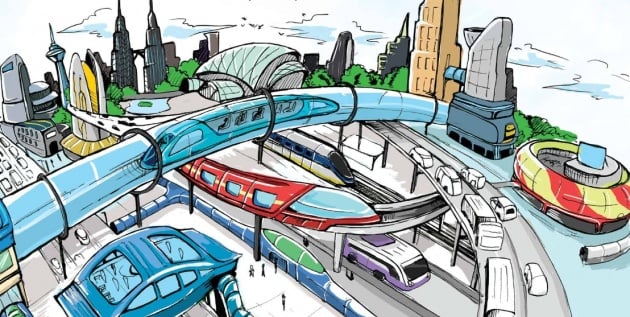We’ve seen what Pakatan Harapan and PAS have promised in their election manifesto for the upcoming 14th general election (GE14), and earlier tonight, ruling party Barisan Nasional (BN) revealed its manifesto, which contains 300 plus initiatives grouped under 14 thrusts.
None of these were related to anything automotive, not directly at least. Unlike the pledges made elsewhere promising the abolishment of the goods and services tax (GST), cheaper cars for first-time buyers (either by the reduction of excise duties for vehicles under 1.6 litres capacity or complete exemption of excise tax for vehicles under 1.3 litres) as well as targeted fuel subsidies, the BN manifesto was more straight-laced, being centred around plans to enhance and develop transportation.
The development of the country’s road network is the primary focus on the motoring front. The party stated that it will upgrade and maintain federal roads on a regular basis as an alternative to tolled highways, and will strengthen transportation networks and interconnectivity in Sabah and Sarawak through the upgrading of 12,500 km of rural roads.
Highway network expansion will also continue, including that for the third phase of the East Coast Expressway (ECE), while the West Coast Expressway – from Banting to Taiping – is scheduled for completion by 2020.
Meanwhile, construction of the Central Spine Road, or Kuala Krai-Kuala Pilah highway, continues. Besides reducing traffic congestion, the 325 km-long route – which will connect Kelantan, Pahang and Negeri Sembilan – aims to drive new economic growth in the East Coast economic corridor.
There will also be a strong focus on infrastructure projects such as village roads, bridges and the addition of streetlights. Chief among these will be the construction of 383 small bridges throughout the country to enhance connectivity between rural areas.
At an individual level, movement on the Transformasi Nasional 50 (TN50) blueprint front will see the introduction of a TN50 public transport pass (costing between RM50–RM150). This will offer unlimited monthly access to public transport for students, working youths, senior citizens and the disabled. Elsewhere, as part of an enhancement to the MyLesen programme, subsidies will be provided to rural youths who apply to get motorcycle (B2 class) licenses.
In terms of public transport, feeder-bus services are set to be enhanced, while there’s plenty of development in store for the country’s rail network. Aside from the planned Kuala Lumpur-Singapore high-speed rail (HSR) project and the 688 km-long East Coast Rail Link (ECRL) that will run from Port Klang to Pengkalan Kubor, work on the 197 km Gemas-Johor Bahru double-tracking project is ongoing.
The manifesto also highlighted a number of other rail projects that are on the cards. Besides the construction of a rapid transit system (RTS) linking Johor Bahru and Singapore, there are plans to build an electrified railway line from Subang Jaya to the Subang Skypark Terminal as part of the planned railway integration, and the Klang Valley dual-track railway line is also due to be upgraded, with 42 km of track set to be repaired.
Other planned projects include the establishment of an integrated intelligent transportation system (ITS), which will cover every type of transportation and traffic across the country.
Looking to sell your car? Sell it with Carro.
















AI-generated Summary ✨
Comments express mixed feelings on Malaysia's transportation development, praising infrastructure plans like HSR and ECRL for economic benefits and cargo efficiency, especially for port connectivity. Some emphasize the importance of public transport and criticise ongoing delays, high costs, and land acquisition issues, raising concerns over environmental impacts and displacement. There is skepticism about the feasibility and transparency of projects, with accusations of corruption and unnecessary spending. Several comments highlight the need to prioritize basic services like healthcare, water, and electricity over grand infrastructure. Debates also focus on the affordability of cars, comparing prices internationally, and questioning whether these projects truly benefit ordinary Malaysians or mainly vested interests. Overall, comments reflect hope for progress but frustration over delays, costs, and failures to deliver on promises.